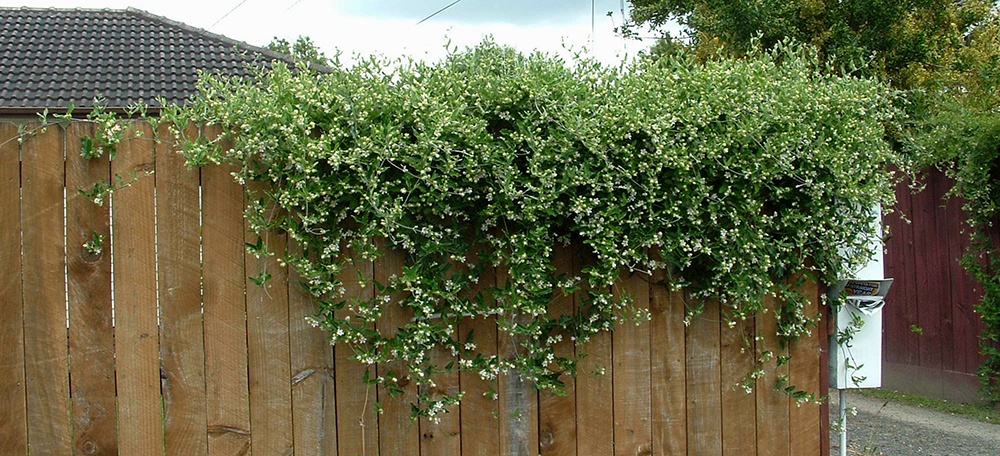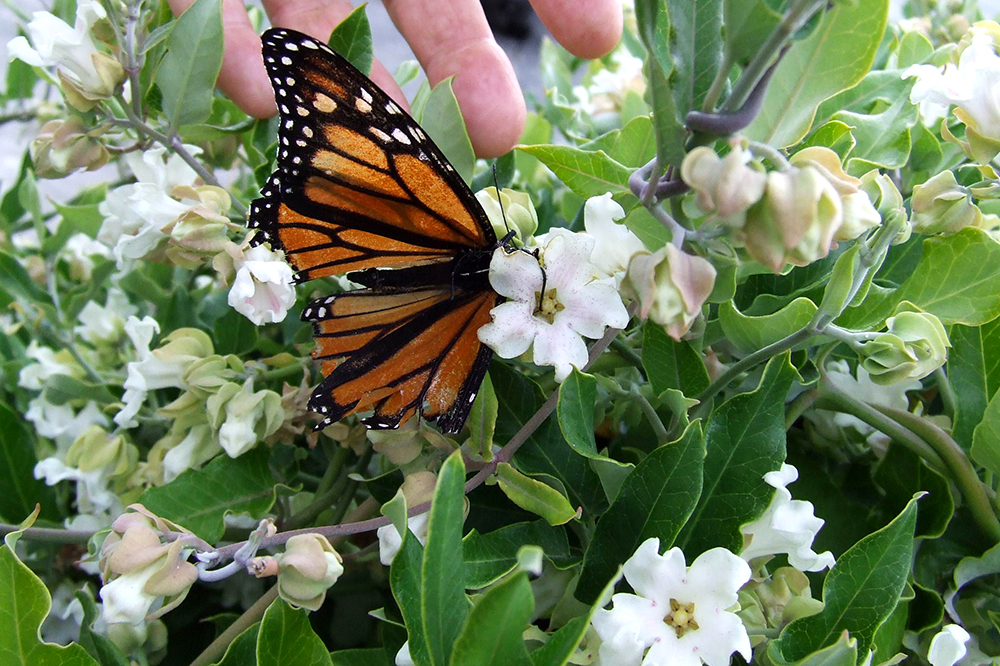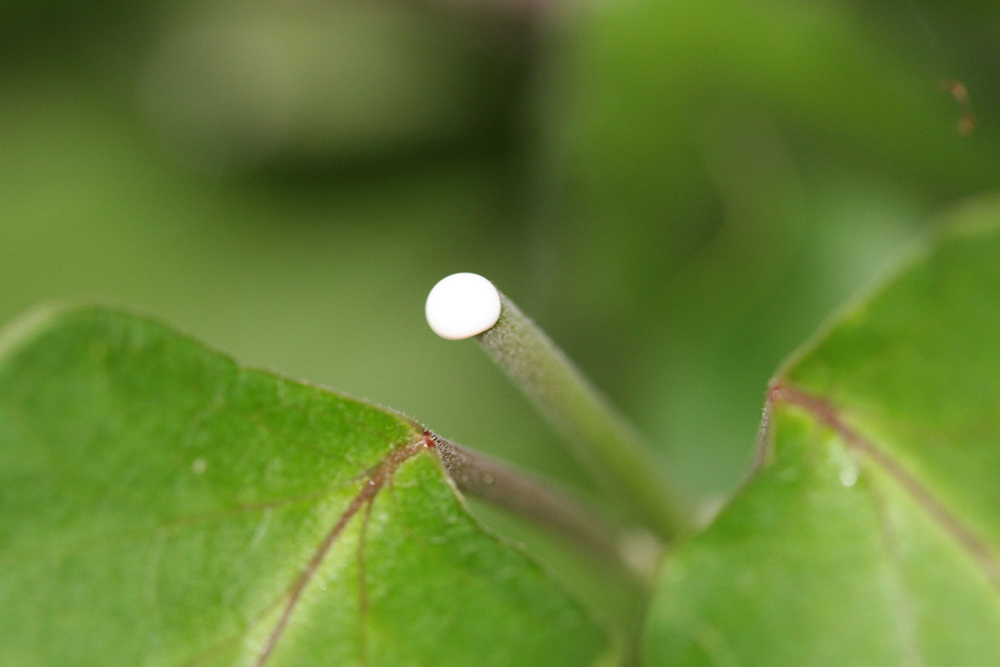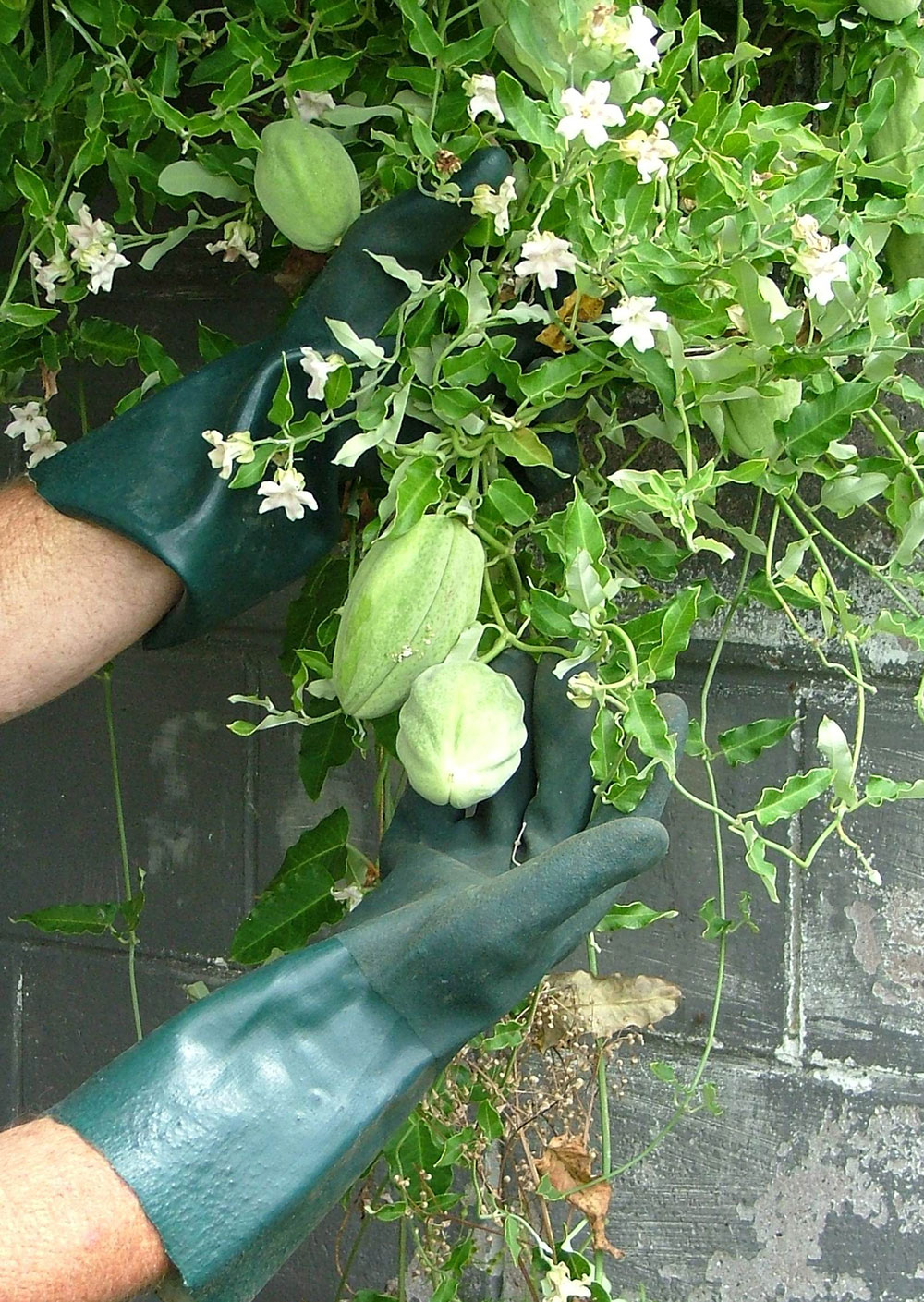Story
Team effort needed to tackle moth plant in Northland!
By Sara Brill, Biosecurity Specialist – Pest Plant Partnerships at Northland Regional Council

Are your fences and trees dripping with moth plant vines?
This time of year, the dreaded pest moth plant (Araujia hortorum) is in full flower. This makes it easier to spot the growing number of fences and trees that are dripping with moth plant vines. It’s also a sign that it’s time to take action – quick!
Moth plant was introduced to New Zealand in the 1880s and is now widespread across the North Island. It is a fast-growing and long-lived vine that smothers and replaces other plants – bad news for both native forests and for your garden hedge.
It is an adaptable weed that can invade a variety of environments, including forest margins, cliffs, stream edges, shrublands, and gardens. Its white bell-shaped flowers produce a sticky nectar that can attract, trap, and kill butterflies. The stems and leaves contain a milky sap that is an irritant to skin and eyes.
The flowers turn into distinctive pear-shaped seed pods (approx. 10cm long) that can house over 500 seeds each. These tiny seeds are attached to silky threads that allow them to float long distances and create potentially hundreds of new infestations.
The good news is that controlling moth plant can be relatively straight-forward, especially if you act now – while plants are in flower and before pods form. Large areas of vines can be killed just by cutting and treating the main stems. Every vine killed makes a huge difference, preventing thousands of seeds from damaging Northland’s environment, so why not take some time this month to look around your local patch for flowering moth plant and take action to prevent the pods!

A Monarch butterfly is trapped by the sticky nectar.

The milky sap oozing from a cut stem.
How to control moth plant:
Please note: The milky sap can be irritating to skin and eyes – wear gloves and long-sleeved clothing to protect yourself and avoid touching your eyes. Wear safety glasses if pulling down pods from overhead.
Physical control
- Pull or dig out the roots of individual plants and cut the root about 5cm underground to ensure the plant doesn’t grow back. The vines can be left in situ to die off (unless you need to pull down and collect any pods that have already formed).
- If seed pods have formed, seal them up in a bag with a cup of water for three months before composting.
Herbicide control
Please note: When using herbicide, make sure to protect yourself by reading labels thoroughly and following all instructions and safety requirements.
- Stump treat: Cut vines close to ground level and immediately treat the cut stumps with a small amount of ONE of the following:
- 200mls Banvine® per 1 litre water, or
- 100mls Brushkiller per 1 litre water, or
- Metsulfuron gel also known as ‘Metgel’
- Picloram gel
The vines can be left in situ to die off (unless you need to pull down and collect any pods).
- Spray: Clear vines off desirable trees and carefully spray with ONE of the following:
- 120mls Banvine® per 10 litres water
- 120mls Brushkiller per 10 litres water
- 5g metsulfuron-methyl (600 g/kg e.g. Escort®) + 10mls penetrant per 10 litres water

Wear gloves when controlling moth plant to avoid skin irritation.
Sample sachets of Metsulfuron-methyl are available from Northland Regional Council (NRC) offices for landowners. Please call 0800 002 004 to check availability at your nearest NRC office.
For more information on arum lily and other pest plants, contact Northland Regional Council on 0800 002 004 and ask to speak to a biosecurity officer, or visit www.nrc.govt.nz/pestcontrolhub
